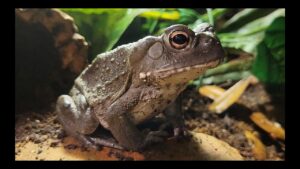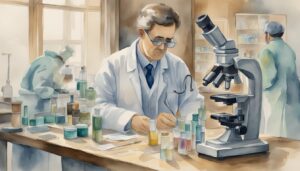Genetic Foundations of Autism
Autism is a complex neurodevelopmental condition with a strong genetic basis.
This section explores the intricate tapestry of genes implicated in Autism Spectrum Disorder (ASD), revealing how genetic mutations contribute to the condition, and highlighting key findings from twin studies on heritability.
Understanding Autism Spectrum Disorder
ASD encompasses a range of conditions characterized by challenges with social skills, repetitive behaviors, speech, and nonverbal communication.
Research indicates that both inherited and spontaneous genetic factors play a crucial role in the development of autism.
Genetic Mutations and Autism
While the exact cause of autism is not entirely known, scientists have discovered that both genetic variants and de novo mutations — changes that occur spontaneously in an individual’s DNA — contribute to the disorder.
They’ve identified several genes, such as SHANK3, CHD8, and SYNGAP1, that are associated with ASD.
These mutations can affect gene expression, leading to the diverse array of symptoms seen in autism.
Heritability and Twin Studies
Twin studies have been particularly revelatory, demonstrating that when one identical twin has autism, there’s a significant chance the other will as well.
This suggests a strong heritable component.
Though ASD can run in families, it’s also associated with de novo mutations.
Such mutations may not necessarily be inherited from parents but occur at or near the time of conception.
Studies investigating the familial risk of autism further elaborate on the genetic complexity, while research on the genetics of autism provides insight into the challenges of unraveling the condition’s genetic underpinnings.
Genetic testing has emerged as a tool to better understand individual cases, especially when assessing for conditions like schizophrenia which may have overlapping genetic factors.
Studies like those examining the reduced folate carrier gene in parents of children with autism offer a glimpse into the possible interplay between genetics and environmental factors.
Parental Roles in Autism Genetics

Understanding the intricate dance between genetics and the potential for a child to develop autism is no simple two-step.
It involves a complex interplay of heredity and environmental factors that researchers are continuously striving to unravel.
Autism Gene Transmission
The autistic spectrum is a genetic marvel as much as it is a mystery, dancing on the double helix of our DNA.
When it comes to passing on these genes, both parents may hold pieces of the puzzle.
Studies show that the likelihood of autism in children can be influenced by genetic variations inherited from both the mother and the father.
It’s a myth that it’s just one or the other; genes from both sides come to this genetic tango.
Parental Age and Genetic Contributions
Time tick-tocks differently in the realm of genetics, and with age, changes in genetic material can accumulate.
Fascinatingly, an increase in parental age, particularly that of the mother, is often associated with a heightened risk of developing autism in children.
This finding indicates that pregnancy age can be more than just a number; it reflects the dance of chromosomes that may influence brain development.
Mother vs. Father: Assessing Risk Factors
Diving into the genetic pool, the mother typically emerges with a possible protective edge, a phenomenon coined as the female protective effect.
This suggests that females may require a greater number of genetic changes than males to develop autism, tipping the scale slightly.
On the flip side, recent research addresses that the father’s age can indeed be a kickstarter in the genetic tale, with older paternal age connected to an increase in de novo—a fancy term for new—gene mutations that can contribute to autism in the family lineage.
The genetic waltz of autism is a reminder that both mothers and fathers, as well as a bevvy of other risk factors, contribute to this complex symphony of heredity, where every gene and every environmental interlude plays a critical part in a child’s development.
Environmental Interactions with Genetics

Examining the complex dance between our genetics and environmental factors offers insights into Autism Spectrum Disorders (ASD).
Unpicking this tapestry reveals how interventions might tilt the balance toward more favorable outcomes.
The Environmental Impact on Genetic Predisposition
While genes lay the groundwork for ASD, external influences play a pivotal role in whether these traits manifest.
Factors like prenatal exposure to certain toxins or infections can trigger susceptible genes.
Research points to conditions such as Fragile X syndrome, where environmental triggers can exacerbate the genetic risk of developing ASD.
Studies illustrate that conditions in the womb, such as exposure to infections during the first trimester, might increase autism risk.
The environment isn’t just about physical factors; it encompasses everything, including the family dynamic.
If there are siblings with ASD, the environmental interplay is more pronounced, possibly altering communication patterns and intervention strategies.
The Role of Interventions and Outcomes
Interventions, particularly early interventions, can significantly influence ASD outcomes.
When therapies address communication hurdles or sensory sensitivities, they change the environment in which genetics operate.
For children at risk of ASD, personalized therapy can diminish anxiety and lower the likelihood of additional conditions like epilepsy.
The right intervention can even engage with spontaneous genetic mutations, shaping the developmental trajectory in surprising ways.
For many, early diagnosis is key, allowing prompt and targeted intervention to encourage positive personality development and manage ASD heterogeneity.
Epigenetics research demonstrates that changes in gene expression, prompted by environmental factors and interventions, can potentially alter the course of ASD.




